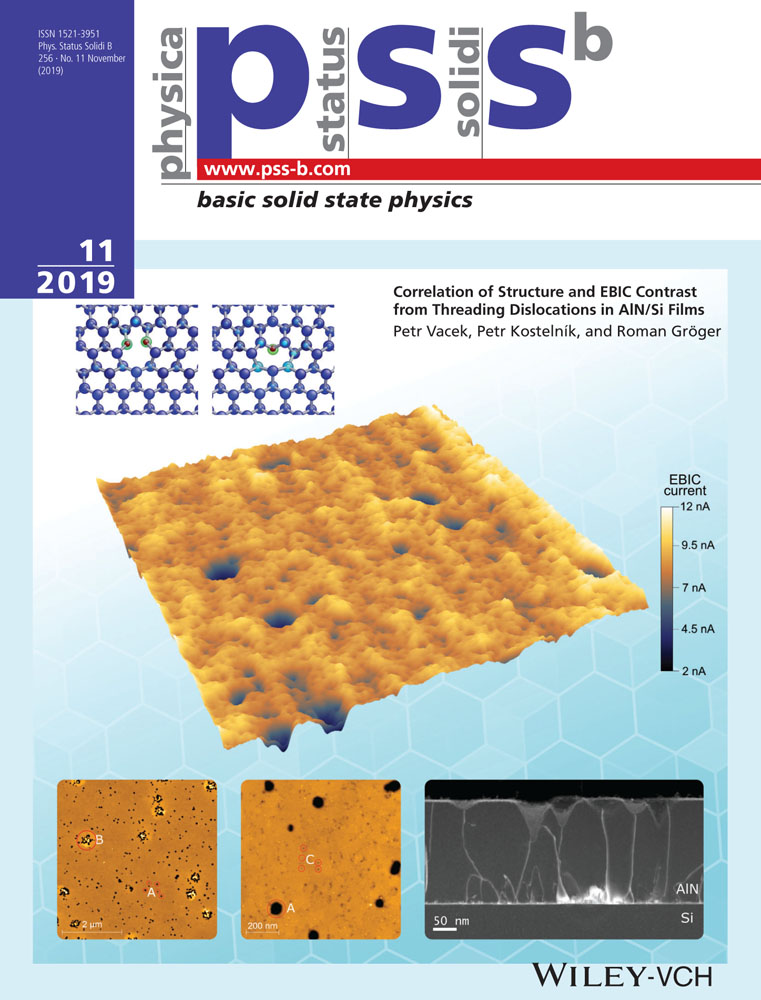Correlation of Structure and EBIC Contrast from Threading Dislocations in AlN/Si Films
Abstract
Epitaxial growth of polar GaN is frequently made on AlN/Si substrates that contain a large density of threading dislocations induced by the mismatch of their lattice parameters and thermal expansion coefficients. In this paper, the structural and electrical properties of surface and extended defects found in 220 nm {0001} AlN films grown epitaxially on {111} oriented Si substrate by metalorganic chemical vapor deposition are characterized. Three types of surface depressions are recognized by atomic force microscopy (AFM) that correspond to V-defects and their clusters and individual threading dislocations. Transmission electron microscopy studies prove that all V-defects are attached to threading screw or mixed-type threading dislocations. The electrical activity of the defects in the AlN film is assessed by measuring the electron beam induced current (EBIC) across Au/Ni/AlN Schottky barrier. The largest drop of EBIC compared to defect-free regions is observed at clusters of V-defects, which have a low density of (2.4 ± 0.4) × 107 cm−2. Only a very weak drop of EBIC is found at isolated threading dislocations, which have much higher density compared to clusters of V-defects. Considering the defects studied, the electrical properties of AlN films are primarily affected by threading dislocations, despite the relatively weak recombination efficiency of individual dislocations.
Conflict of Interest
The authors declare no conflict of interest.




